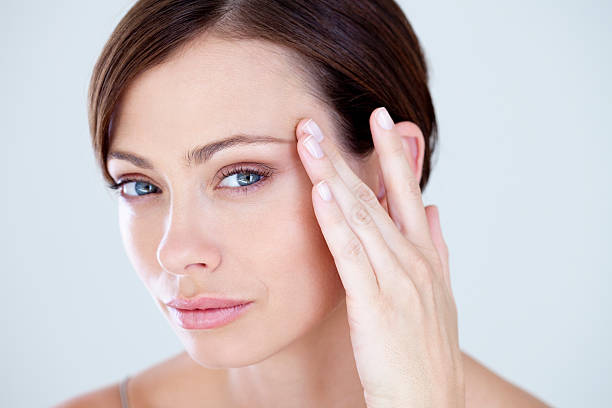The Science of Cryotherapy: Freezing Pain Away or Just a Chill Fad?
First of all,
In recent years, cryotherapy has surged in popularity as a method for pain relief, athletic recovery, and even beauty treatments. Advocates tout its benefits for reducing inflammation, boosting metabolism, and improving overall well-being. However, amidst the hype, questions linger: Is cryotherapy truly effective, or is it merely another passing fad? To understand the science behind cryotherapy, we delve into its mechanisms, benefits, risks, and explore its place in modern medicine.
Understanding Cryotherapy:
Cryotherapy, derived from the Greek words “cryo” meaning cold and “therapy” meaning cure, encompasses various techniques that involve exposing the body to extremely cold temperatures for therapeutic purposes. While cryotherapy has ancient roots, modern variations include whole-body cryotherapy (WBC), localized cryotherapy, and cryofacial treatments.
Whole-body cryotherapy involves entering a chamber cooled with liquid nitrogen, where temperatures plummet to around -200 to -300 degrees Fahrenheit for a few minutes. Localized cryotherapy targets specific areas of the body with cold air or gel packs, while cryofacials apply cold to the face for cosmetic benefits.
The Science Behind Cryotherapy:
The primary purported mechanism of cryotherapy revolves around its ability to induce vasoconstriction, or the narrowing of blood vessels, followed by vasodilation, the subsequent widening of blood vessels upon exiting the cold environment. This process is believed to reduce inflammation, alleviate pain, and promote tissue repair.
During cryotherapy, the body enters a state of cold stress, triggering physiological responses such as the release of endorphins, adrenaline, and noradrenaline, which contribute to pain relief and a sense of well-being. Additionally, cold exposure may activate brown adipose tissue, known for its role in thermogenesis and energy expenditure.
Furthermore, cryotherapy’s anti-inflammatory effects are thought to stem from its ability to decrease pro-inflammatory cytokines while increasing anti-inflammatory markers, thus modulating the immune response and potentially benefiting conditions like arthritis and muscle soreness.
Evaluating Cryotherapy’s Benefits:
Proponents of cryotherapy advocate its use for a myriad of purposes, including athletic recovery, pain management, weight loss, and even mood enhancement. Athletes often turn to cryotherapy to accelerate muscle recovery, reduce post-exercise soreness, and enhance performance. Some studies suggest that cryotherapy may indeed expedite recovery by reducing markers of muscle damage and inflammation.
Moreover, cryotherapy has gained traction in the realm of pain management, particularly for conditions like osteoarthritis, rheumatoid arthritis, and fibromyalgia. While research is ongoing, some evidence supports its efficacy in alleviating pain and improving function, potentially offering a drug-free alternative to traditional treatments.
In addition to its physical benefits, cryotherapy enthusiasts tout its potential for enhancing mental well-being. The release of endorphins and other neurochemicals during cold exposure may contribute to mood elevation and stress reduction, though more research is needed to elucidate its psychological effects fully.
Examining the Risks and Limitations:
Despite its perceived benefits, cryotherapy is not without risks and limitations. While adverse effects are typically mild and transient, including skin redness, numbness, and frostbite in rare cases, caution is warranted, especially for individuals with certain medical conditions.
Individuals with cardiovascular issues, respiratory conditions, or compromised circulation should consult a healthcare professional before undergoing cryotherapy, as exposure to extreme cold temperatures may exacerbate these conditions. Moreover, cryotherapy may not be suitable for everyone, and its long-term effects remain uncertain.
Furthermore, the scientific evidence supporting cryotherapy’s efficacy remains mixed, with some studies demonstrating positive outcomes while others yield inconclusive results. More rigorous research, including randomized controlled trials, is needed to elucidate cryotherapy’s mechanisms and efficacy across various conditions comprehensively.
Navigating Cryotherapy in the Modern Landscape:
In the age of wellness trends and quick-fix solutions, cryotherapy has emerged as a compelling option for individuals seeking alternative therapies for pain relief, recovery, and rejuvenation. However, distinguishing between evidence-based practices and passing fads is essential in navigating the ever-evolving landscape of health and wellness.
While cryotherapy shows promise in certain contexts, it is not a panacea, and its widespread adoption should be approached with caution. As with any therapeutic modality, individualized assessment, informed decision-making, and collaboration with healthcare professionals are paramount to ensuring safety and efficacy.
Conclusion:
The science of cryotherapy presents a complex interplay between cold exposure, physiological responses, and therapeutic outcomes. While proponents extol its virtues for pain relief, recovery, and well-being, skepticism persists regarding its efficacy and long-term effects.
As cryotherapy continues to captivate both mainstream audiences and scientific communities, further research is imperative to elucidate its mechanisms, optimize its applications, and discern its place within modern medicine. In the meantime, informed decision-making, prudent use, and ongoing dialogue are essential in navigating the evolving landscape of cryotherapy and its potential impact on health and wellness.










